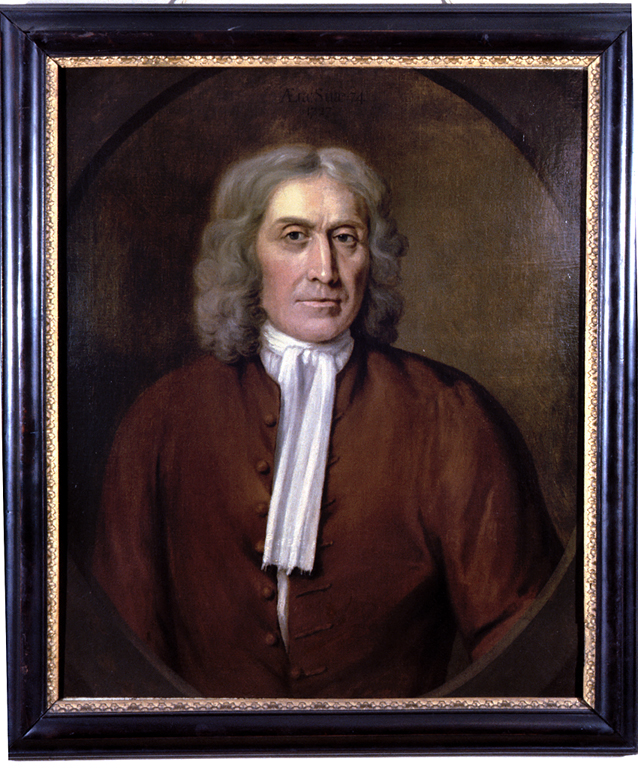| Maker(s): | Pelham, Peter (attributed to) | | Culture: | English (1697-1751)
| | Title: | Portrait of John Barnard
| | Date Made: | 1727
| | Type: | Painting
| | Materials: | oil on canvas, wood, gilding, stain, pencil, paper, chalk, ink
| | Place Made: | United States; Massachusetts; Boston
| | Measurements: | image: 28 1/2 x 24 1/2 x 2 in.; 72.39 x 62.23 cm
| | Accession Number: | HD 55.103
| | Credit Line: | Gift of Henry N. Flynt and Helen Geier Flynt
| | Museum Collection: | Historic Deerfield
|
|

|
Description:
Oil portrait of John Barnard (1653-1732), a Boston and Marblehead merchant and deacon in Cotton Mather's church. The portrait was painted by Peter Pelham (1695-1751), an English mezzotint engraver, in 1727, the year he emigrated from London to Boston. Although Pelham became known for his 1728 oil portrait of Rev. Cotton Mather from which he made mezzotints, he was not able to support his family from mezzotint engraving only. He tried music and dancing concerts, and after a brief period in Newport, returned to Boston in 1737 where he established a school for "Education of Children in Reading, Writing, Needlework, Dancing, and the Art of Painting on Glass." In 1748, Pelham married his third wife, Mary Copley, the widowed mother of John Singleton Copley (1738-1815), when John was 10 yrs. The 3 1/2 yrs. before Pelham's death in 1751 represented an early, significant influence on John Copley with instructions in artistic techniques and theory, business, European traditions and designs, and manners. It has also been suggested that having John Copley as an apprentice helper enabled Pelham to produce his last seven portraits, done between 1750-1751. This half-length portrait shows a man facing forward with long grey hair and large hooked nose, wearing a white cravat and brown coat. The inscription, "Aeta: Suae 74/1727", painted over the head appears to be original. An pencil inscription on the back of the canvas reads: "John Barnard. Deacon of Cotton Mather's Church./ father's Great Great Grandfather, J. B. S. Jackson M.D./ R. T. Jackson/ Henry Jackson/ Hareford St. 75." An old damaged printed label, which may have been placed there during the 1871 Boston Athenaeum exhibition since its text agrees with the catalogue text, reads: "Subject, ... Deacon Barnard of Cotton Mather.../ Artist, supposed to be Peter Pelham/ Owner, Dr. J.B. S. Jackson"; a typed label reads: "...is a portrait by/ Pelham/ Pelham married the widow/ of Copley,/ SR. - MOTHER/ OF THE ARTIST"; and and a chalk inscription reads "H. Flynt." Dr. J. B. S. Jackson lived in Boston. The frame, which is contemporary if not original, has a black-stained wood molding with a molded, gilt gesso inner border with stylized cross-cut leaves with fine leaf tips.
Tags:
portraits Subjects:
Portraits Link to share this object record:
https://museums.fivecolleges.edu/detail.php?t=objects&type=ext&id_number=HD+55.103 |